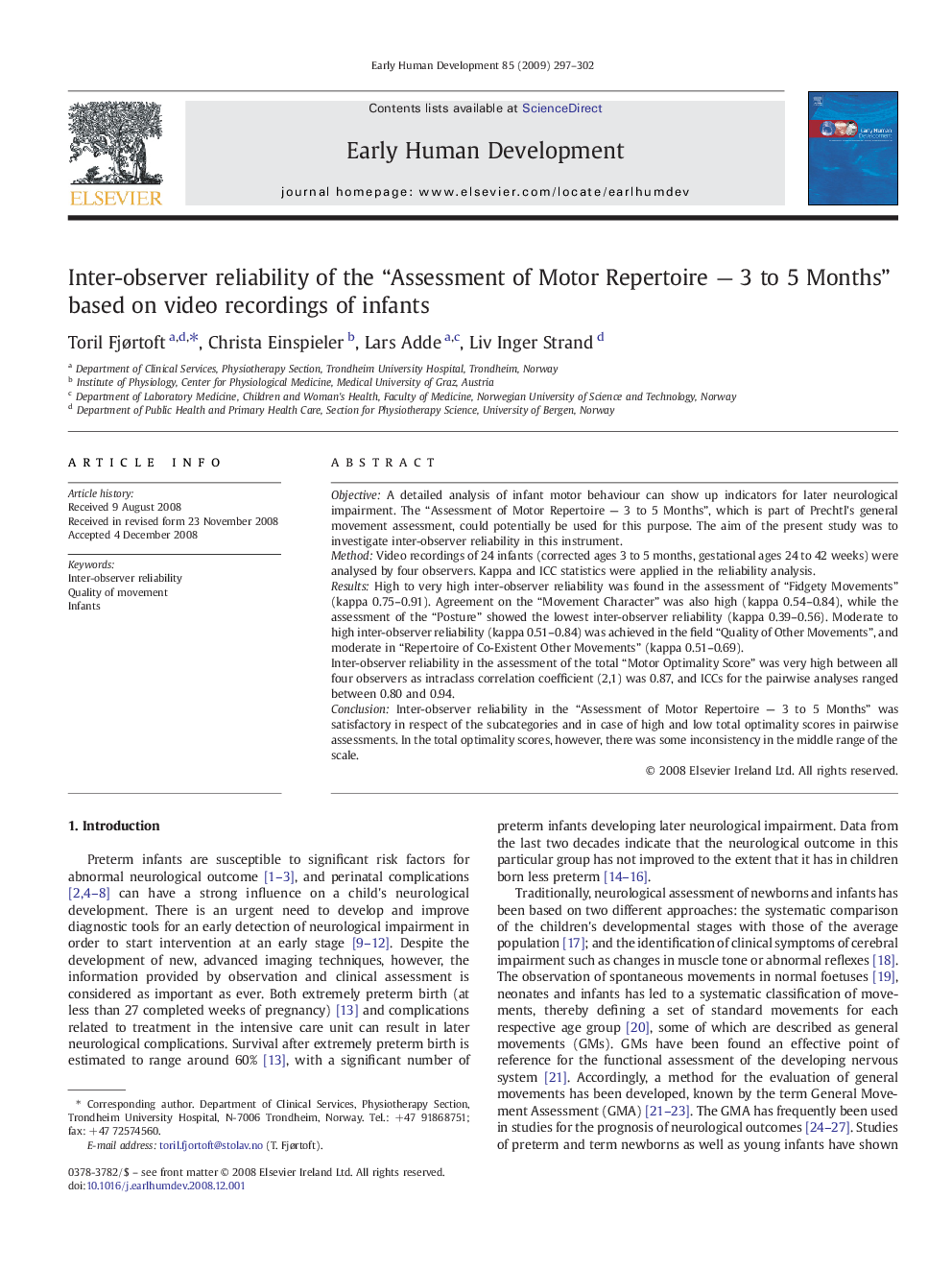| Article ID | Journal | Published Year | Pages | File Type |
|---|---|---|---|---|
| 6172274 | Early Human Development | 2009 | 6 Pages |
ObjectiveA detailed analysis of infant motor behaviour can show up indicators for later neurological impairment. The “Assessment of Motor Repertoire - 3 to 5Â Months”, which is part of Prechtl's general movement assessment, could potentially be used for this purpose. The aim of the present study was to investigate inter-observer reliability in this instrument.MethodVideo recordings of 24 infants (corrected ages 3 to 5Â months, gestational ages 24 to 42Â weeks) were analysed by four observers. Kappa and ICC statistics were applied in the reliability analysis.ResultsHigh to very high inter-observer reliability was found in the assessment of “Fidgety Movements” (kappa 0.75-0.91). Agreement on the “Movement Character” was also high (kappa 0.54-0.84), while the assessment of the “Posture” showed the lowest inter-observer reliability (kappa 0.39-0.56). Moderate to high inter-observer reliability (kappa 0.51-0.84) was achieved in the field “Quality of Other Movements”, and moderate in “Repertoire of Co-Existent Other Movements” (kappa 0.51-0.69).Inter-observer reliability in the assessment of the total “Motor Optimality Score” was very high between all four observers as intraclass correlation coefficient (2,1) was 0.87, and ICCs for the pairwise analyses ranged between 0.80 and 0.94.ConclusionInter-observer reliability in the “Assessment of Motor Repertoire - 3 to 5Â Months” was satisfactory in respect of the subcategories and in case of high and low total optimality scores in pairwise assessments. In the total optimality scores, however, there was some inconsistency in the middle range of the scale.
